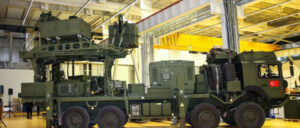
The Libyan National Army (LNA) held aerial dominance last year in its effort to topple the internationally-recognized Government of National Accord (GNA), in part due to the LNA's use of vintage Russian MiG-21/23 fighters and Mi-24/35 attack helicopters supplied to former Libyan strongman Muammar al-Gaddafi, killed in October, 2011 during popular unrest after the Arab Spring. Other systems the LNA took advantage of included the Chinese Wing Loong II combat drones, likely supplied by the United Arab Emirates (UAE), and…














